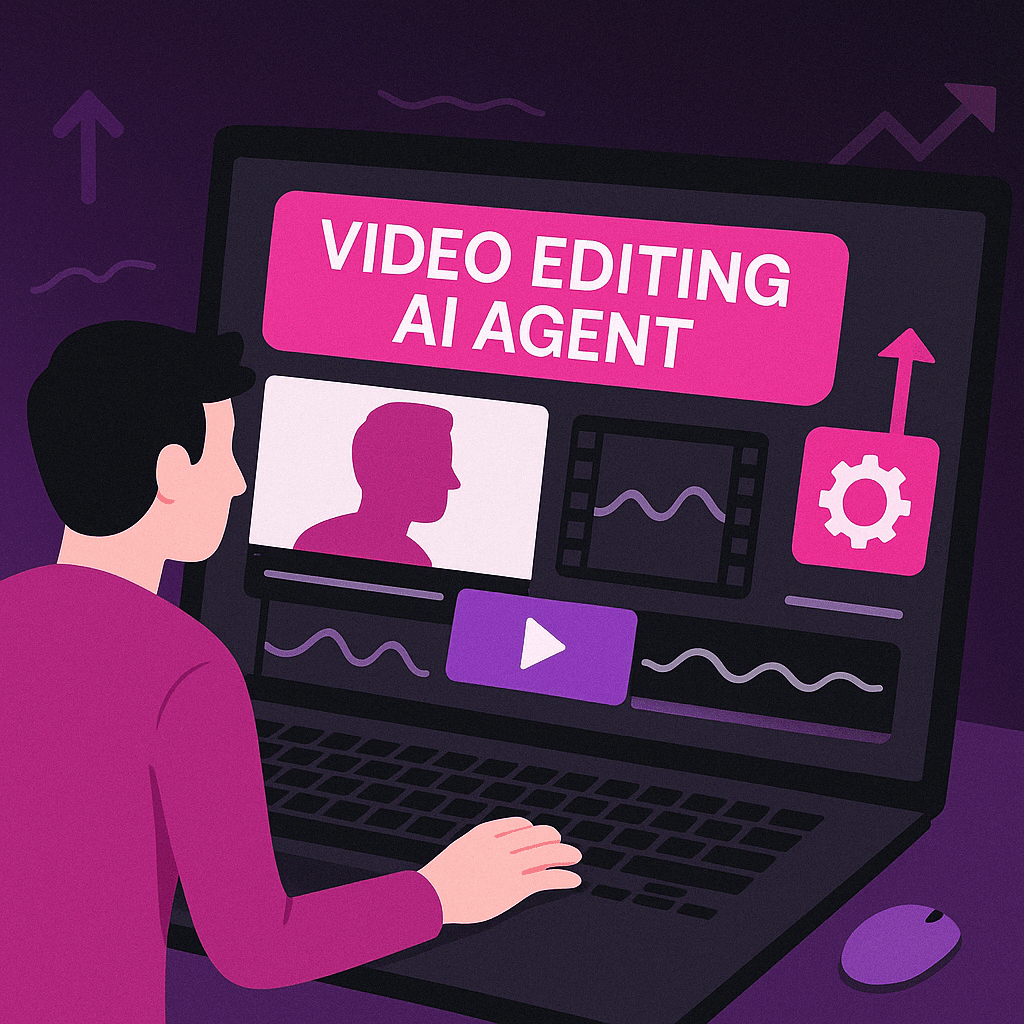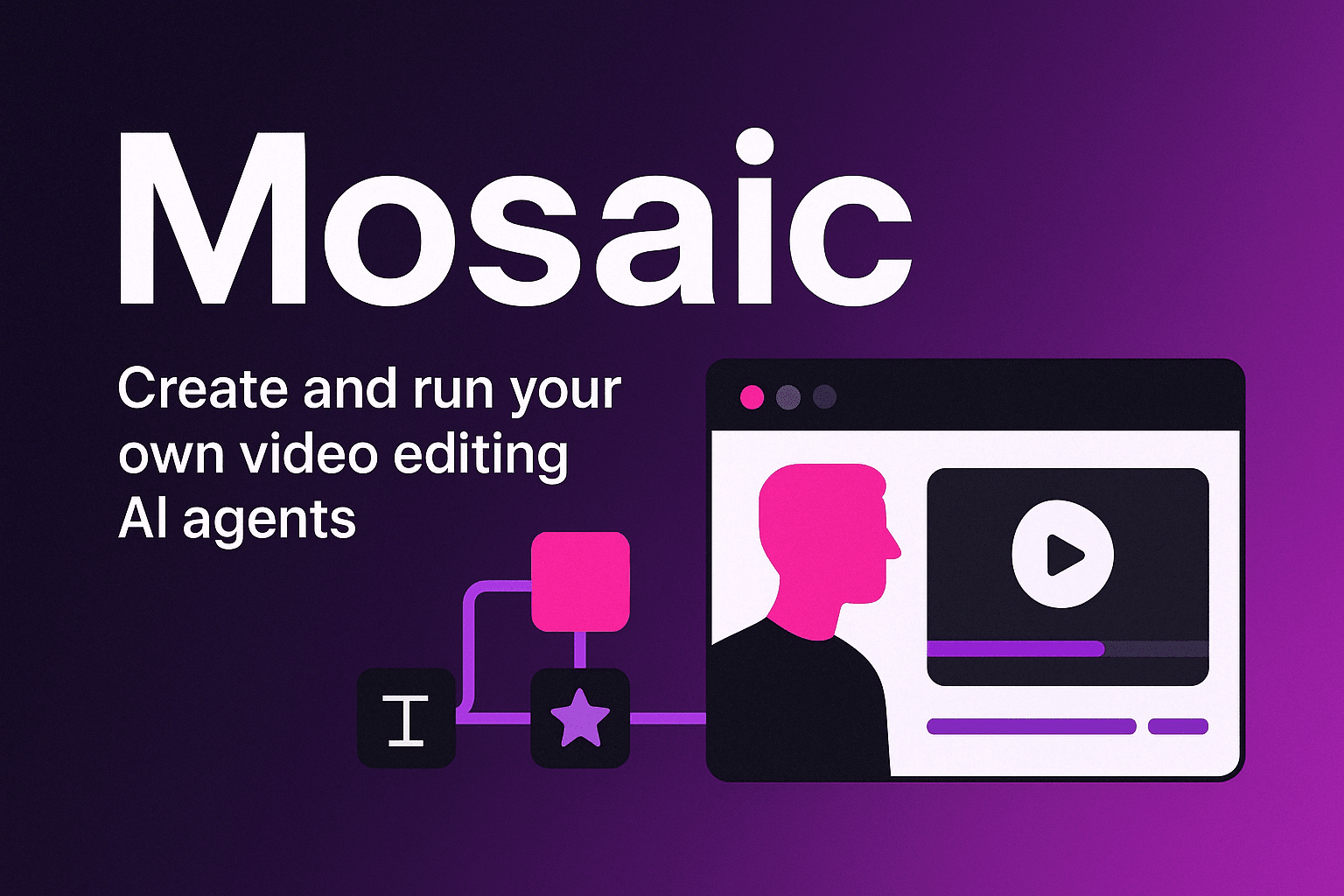Craft Your Content Like a Mosaic: The New AI Video Editing Paradigm
The inception of Mosaic was rooted in a moment of viral potential and personal frustration. The startup's co-founders—former engineers at Tesla—were experimenting with an idea for a fun YouTube video. Their plan was simple yet clever: film traffic in Palo Alto and count how many Cybertrucks passed by. For every Cybertruck spotted, they'd buy a share of Tesla stock. The raw footage was plentiful, the content ripe for virality—but then came the editing. Hours of footage had to be painstakingly scrubbed to locate Cybertrucks. Traditional video editing tools like Adobe Premiere Pro and DaVinci Resolve quickly proved to be clunky and unintuitive.
Features were buried in complex UI layers, forcing the founders to constantly Google instructions or rely on ChatGPT for basic tasks. This frustrating experience prompted an epiphany: what if editing software could see and hear the video, and then take intelligent action? With the advent of multimodal AI, they realized such a tool was now possible—and sorely needed. Thus began Mosaic: a revolutionary, agentic video editing platform built to transform editing from a multi-hour chore into a streamlined, AI-driven experience.
How did Mosaic evolve from concept to product?
The development of Mosaic unfolded at breakneck speed. During their first month at Y Combinator’s Winter 2025 batch, the founders focused on building a full-featured video editor with a powerful multimodal chat interface. This early version allowed users to talk to an AI copilot that could edit based on what it "saw" and "heard" in the video. However, after extensive user feedback, they hit a critical realization: the linear prompt-response structure of chat wasn’t ideal for the inherently non-linear, iterative nature of video editing.
This led them back to first principles. In month two, they began reimagining what video editing could look like if it were designed for AI agents from the ground up. The result was Mosaic’s defining innovation: a node-based canvas where users could create and run their own video editing agents. Each “Tile” on the canvas represents a customizable operation, and when strung together, these Tiles form an intelligent Agent that can edit autonomously.
What makes Mosaic’s approach to video editing unique?
At the core of Mosaic is a dramatic shift in editing philosophy. Instead of treating AI as a secondary feature—an enhancement to a traditional editor—Mosaic treats AI as the main character. Its system is built around Agents, modular and programmable AI workflows that carry out sophisticated video edits.
Each Agent is composed of Tiles that represent actions like cutting clips, adding captions, dubbing voices, or injecting B-roll. These Tiles can be dragged and connected on a visual canvas, allowing users to customize or combine them in various ways. You can create branching paths, run multiple variants of a video simultaneously, and preview the results in real time. It’s like visual programming, but tailored for storytelling.
Once the Agent completes its task, users can jump into Mosaic’s native editor and tweak the output using Chat—a multimodal AI assistant that understands the content of the video. Ask it to trim awkward pauses, change background music, or translate speech, all through natural language commands.
How do Mosaic’s AI Agents work in practice?
Mosaic provides a library of pre-built Agents, but also empowers users to build their own. Each Agent is designed for a specific editing goal, with the ability to evaluate and optimize its output during runtime. A few standout examples include:
- Curator Agent: Specializes in turning long-form videos into bite-sized, high-engagement clips perfect for TikTok, Instagram, or YouTube Shorts.
- Linguist Agent: Enables full content localization with voice cloning, lip syncing, dubbing, and translation across 30+ languages—ideal for international creators or businesses.
- Attention Agent: Focuses on enhancing viewer retention by adding auto-generated B-roll, background music, and dynamic captions based on where attention might otherwise dip.
With these agents, Mosaic accelerates video editing workflows that would traditionally take hours or days into something that feels instantaneous.

How does the Canvas system redefine workflow automation?
The Canvas is the heart of Mosaic’s paradigm shift. It serves as a live, visual workspace where Agents are created and deployed. Unlike traditional timelines or layers, the Canvas is node-based and built for experimentation. It allows users to:
- Build from scratch or start with templates
- Drag and drop Tiles for each editing task
- Run in parallel, enabling multiple video outputs simultaneously
- Preview instantly how each stage of the Agent transforms the video
- Branch workflows, letting one video generate multiple stylistic or localized versions
For creators who work with recurring video structures—think podcasts, interviews, or product demos—the ability to templatize and replicate editing workflows is transformative.
How does the Chat feature simplify detailed edits?
Once the bulk of the editing is complete, Mosaic offers a smooth transition to polish through Chat. This multimodal assistant isn’t just a text-based chatbot; it deeply understands the video’s visual and audio components. It allows users to:
- Prompt edits directly: “Remove background noise at 1:45” or “Add subtitles from 0:30 to 1:15”
- Drag and drop AI-generated assets—like music or images—right into the timeline
- Analyze the video for pacing, clarity, or engagement
- Edit with context-aware intelligence, not just pre-programmed templates
This makes Mosaic ideal not only for professionals but also for anyone who wants to edit videos without the steep learning curve of conventional tools.
Who is Mosaic built for?
While Mosaic’s sophisticated architecture may appeal to professional content creators, marketers, and production teams, it’s equally designed for accessibility. The platform requires no prior knowledge of editing software, coding, or machine learning. Whether you're a YouTuber trying to scale content production, a startup building video marketing assets, or a language instructor creating localized videos, Mosaic meets you at your level.
The founders' original pain point—manually scrubbing through raw footage—mirrors the experience of countless content creators today. By reducing friction and automating grunt work, Mosaic empowers creators to focus on creativity rather than complexity.
What does the future hold for Mosaic?
With Mosaic already redefining how videos are edited, the road ahead looks promising. The founders envision a future where video creation becomes as fast and fluid as writing an email. They're exploring ways to expand the Agent ecosystem, introduce collaborative editing modes, and integrate Mosaic with other media platforms.
As AI continues to improve in areas like visual reasoning, emotion detection, and generative media, Mosaic is well-positioned to evolve into a comprehensive creative co-pilot. By abstracting away the technical barriers and amplifying creative possibilities, Mosaic isn’t just making video editing easier—it’s reimagining it entirely.

